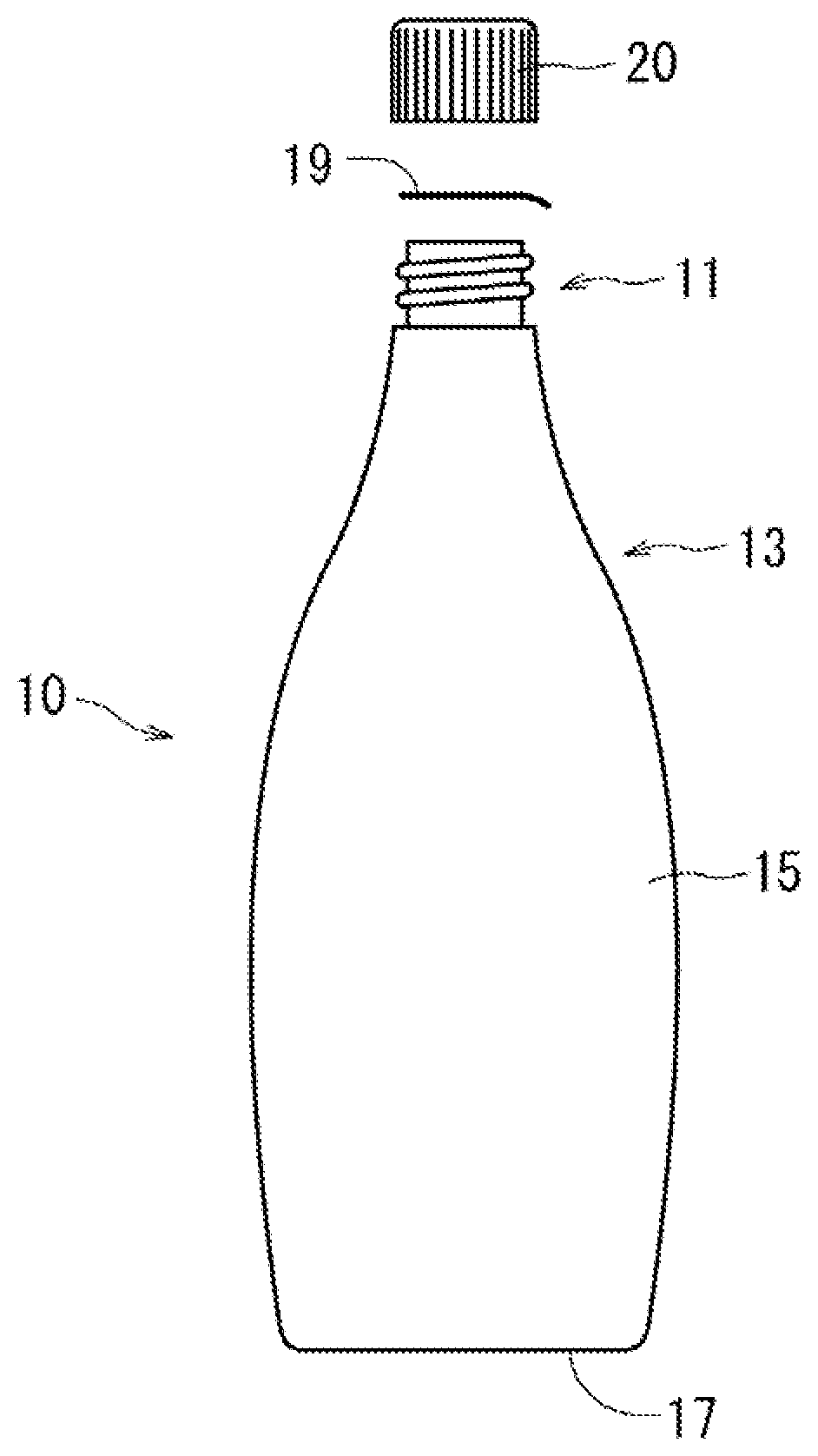Container in which inner surface is formed from olefin resin layer
a technology of olefin resin and inner surface, which is applied in the direction of synthetic resin layered products, rigid containers, packaging, etc., can solve the problems of content degradation, content cannot be quickly discharged, and cannot be used up, so as to achieve excellent flavor retention, excellent slip-down properties, and considerable flavor degradation
- Summary
- Abstract
- Description
- Claims
- Application Information
AI Technical Summary
Benefits of technology
Problems solved by technology
Method used
Image
Examples
example 1
[0085]A multilayered parison including six layers of five types was formed by using five extruders. This multilayered parison was subjected to a direct blow forming to obtain a plastic bottle constituted of six layers of five types (internal volume: 500 ml) having a shape as shown in the FIGURE. The material of the inner surface layer was prepared by mixing the following resin pellets, the organic bleeding lubricant, and an inorganic porous agent before the extrusion.
[0086]Outer surface layer (75 μm) / adhesive layer (2.4 μm) / gas barrier layer (10 μm) / adhesive layer (2.4 μm) / main layer (180.2 μm) / inner surface layer (30 μm)
[0087]Materials for the respective layers are described below.
[0088]The low-density polyethylene is abbreviated as LDPE. Here, the main layer denotes an olefin resin layer in which neither an inorganic porous agent nor a lubricant is blended.
[0089]Outer surface layer;
[0090]LDPE (density: 0.921 g / cm3)
[0091]Adhesive layer;
[0092]Acid-modified polyethylene
[0093]Gas barr...
example 2
[0108]A plastic bottle was prepared in the same manner as Example 1 except that the lubricant of the inner surface layer was replaced by erucic acid (melting point=34° C.) and the blend amount was changed to 10.0% by mass, and the respective evaluations were conducted. The evaluation results are shown in Tables 1 and 2.
example 3
[0109]A plastic bottle was prepared in the same manner as Example 1 except that the lubricant of the inner surface layer was replaced by lauric acid (melting point=45° C.) and the blend amount was changed to 10.0% by mass, and the respective evaluations were conducted. The evaluation results are shown in Tables 1 and 2.
PUM
| Property | Measurement | Unit |
|---|---|---|
| melting point | aaaaa | aaaaa |
| mole ratio | aaaaa | aaaaa |
| mean particle size | aaaaa | aaaaa |
Abstract
Description
Claims
Application Information
 Login to View More
Login to View More - R&D
- Intellectual Property
- Life Sciences
- Materials
- Tech Scout
- Unparalleled Data Quality
- Higher Quality Content
- 60% Fewer Hallucinations
Browse by: Latest US Patents, China's latest patents, Technical Efficacy Thesaurus, Application Domain, Technology Topic, Popular Technical Reports.
© 2025 PatSnap. All rights reserved.Legal|Privacy policy|Modern Slavery Act Transparency Statement|Sitemap|About US| Contact US: help@patsnap.com

